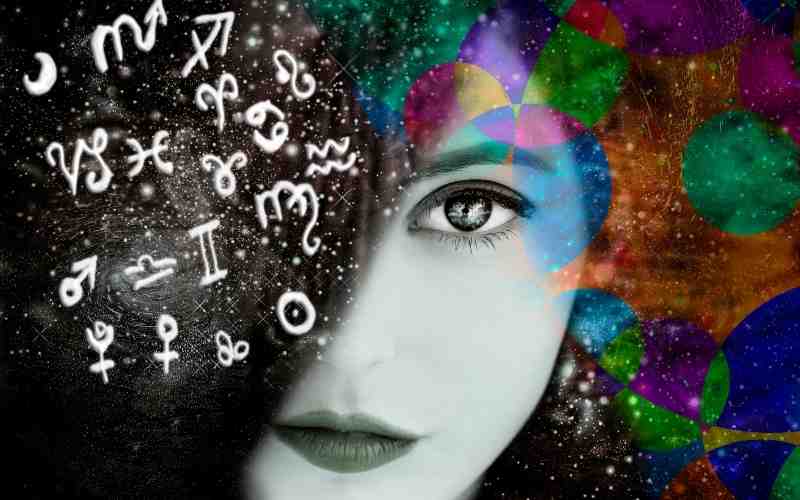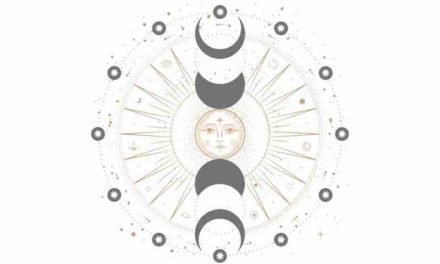As far as astrology systems are concerned, there are two main ones in popular use today: the Western Tropical system, which we use here on Astrology on the Web; and the Vedic Sidereal model, which is predominantly utilized in India and among Indian communities all throughout the globe. Your favorite astrologers have all grown up in the Western tradition, so it’s only natural that we utilize and appreciate it as much as they do.
Now, both systems have devoted supporters, and on occasions, partisanship may be severe on either side of the political spectrum. We shall try to describe the distinctions between these two great systems and dispel any concerns that anybody could have about astrology.
Using some seeming contradiction to their advantage in the future through this post. Such individuals do, in fact, seek to disparage astrology for just this reason, claiming that it must be “unscientific” due to its (apparently) contradictory results.
Material science advances quite happily in terms of its outcomes despite the fact that it has not resolved such massive inconsistencies as the two opposing worldviews implied by the theory of relativity and that implied by the system of quantum mechanics.
The ferocious debates between adherents of the steady-state theory and the big bang theory of cosmology; and divergent viewpoints in biology or chemistry, not to mention the so-called soft sciences of psychology, ecology, and so on.
I’m hesitant to discuss issues that are under the supervision of highly compensated professionals in allopathic medicine, economics, sociology, and other intellectual accomplishments, but I must. For the same reason that inconsistency to the point of violence exists in every human activity, let us not linger on this topic.
Astrology, regardless of one’s skin tone, is based on a symbolic pattern of mathematical correlations known as the Zodiac, which is derived from Greek and means “circle of animals.” The circle is divided into 360 equal degrees, which are the fundamental divisions on which all else is based.
This circle is projected into the skies through a narrow track known as the ecliptic, which is only about 15 degrees wide and along which the planets travel and establish their geometrical connection, and which is around 15 degrees wide (aspects).
Due to the fact that the zodiac is represented as a ring that surrounds the world, from a geocentric (earth-centered) viewpoint, the earth is considered to be at the center of the cosmos.
In the zodiac, each Sign is split into twelve equal sectors of 30 degrees of arc, which are divided into twelve equal sectors of 30 degrees of arc each. These are the well-known “Sun Signs,” such as Aquarius, Scorpio, Gemini, and so on.
In addition to their respective positions on the ecliptic, the planets and other sensitive points on the ecliptic, as well as their relationship and relative strengths, provide the variable factors that allow for the magnificent depth of field that can be used to analyze, match, and predict reliable outcomes for nearly every subject under the sun.
These are some of the parallels. The discrepancies come as a result of the way the zodiac is arranged. Aside from the fact that Vedic astrology is based on a sidereal (star-focused) viewpoint, tropical astrology also has a seasonal emphasis.
In the West, a circular chart is used, however, in the Vedic tradition, a rectangular chart is used. The pattern used in Northern India differs from the pattern used in the southern region of the country.
Recent findings have shown that ancient and medieval astrologers seemed to have used a similar chart format; they have also revealed that Kepler employed the tropical method, despite the fact that his charts looked like they were drawn in the North Indian manner.
Both systems make use of the zodiac, albeit the Vedic system is heavily influenced by the Moon, and the tropical system is primarily influenced by the Sun.
In both cases, the ascendant or rising sign is significant. Traditionally, Vedic astrologers have relied on just the visible planets such as the Sun and Moon as well as the Moon’s nodes Rahu and Ketu for their calculations, which are accorded planetary status.
Western astrologers also make use of the freshly discovered outer planets (Uranus, Neptune, and Pluto), as well as other minor planets, such as Chiron and various asteroids, to determine their future outcomes (Juno, Vesta, Ceres, Pallas Athena being the main ones). Because these planets cannot be seen with the human eye, they were not taken into consideration by the ancients.
Yet, according to Cheiro, there are allusions to additional planets in certain obscure manuscripts, and even detailed systems for determining the positions of what is now known as the Outer Planets, which consist of Uranus, Neptune, and Pluto, in some texts.
Although the Moon’s nodes are not as widely accepted by current astrologers as they were by more conventional Western practitioners in the past, anybody who has studied them and their effects will agree that they are still relevant.
There is also a variation in attitude when it comes to the notion that planets might be friends, adversaries, or neutral to one another. Even though it is a critical aspect in Vedic analysis, it is not really taken into account in the West.
While the methods used in forecasting are different, with the Westerners relying primarily on transits and progressions of the planets, the Jyotishis prefer a system of planetary periods, wherein each planet has a set period of influence, called a dasha, which is further subdivided into sub-periods called bhuktis, wherein the dasha ruler is granted assistant sub-rulerships from other planets during the periods of their bh
When it comes to astrology, it is not about the planets and constellations; rather, it is about the interpretation of symbolic symbols and their significance in our daily lives. Each of these symbols, as well as their mathematical connection with one another, are mapped to consciousness, namely to the cosmic awareness that supports the operation and direction of our world and its universe.
With the assumption that every part or unit of the cosmic being that comprises our world has some meaning and consciousness in and of itself, the key issue is how to organize this massive body of consciousness into sets of patterns that can be reliably and consistently interpreted as meaning and consciousness.
This has been accomplished through millennia by meticulous observation and correlation, culminating in the creation of the body of knowledge that we know as Astrology today. It doesn’t matter if the initial discovery of astrology was the result of divine intervention, revelation, or just minute observation mixed with an element of intuition; what matters is that it happened.
However, like with any scientific endeavor, inspired initial notions have been worked out in detail by large numbers of individual “experiments” by a large number of untrained astrologers, with the result that the hypothesis in issue has been confirmed rather than falsified.
Further, in the West, astrological research is a constant, ongoing, growing endeavor in which new factors are discovered and factored into the mix. For example, the outer planets, asteroids, galactic centers, and other factors, thanks to the marvelous computer. Huge numbers of charts can be quickly calculated and assessed with regard to the effects of these new factors on the lives of the beings that inhabit our world.
However, this does not imply that we should disregard the accomplishments of the past, nor that there is no continuous advancement in Jyotish science. It goes without saying that exploring these more traditional areas can be extremely beneficial, and my Hyderabadi friend and astrological researcher.
Ram Ramakrishnan is currently working on a super-powerful computer program that will take new discoveries in Jyotish (as well as Western Astrology) and turn them into a powerful tool for those who wish to know the future, so keep an eye on this space for further developments.
As a consequence of the heliocentric Copernican revolution, which toppled the Earth-centered Ptolemaic worldview, which was founded on the old Aristotelian cosmology, astrology took a severe thrashing in intellectual circles in the Western world, particularly in Europe.
The growth of modern chemistry and its table of elements, which appears to overthrow the ancient elemental approach of Fire, Air, Earth, Water, and the Quintessence (Ether or Akasha), combined with this caused that astrological baby, along with its twin, the useful system of humor in physiology, to be thrown out with the superstitious bathwater, at least in some circles that have now taken control of the education system in the Western world.
Unfortunately, this is still the case, but new technological breakthroughs, such as the capability of action from a distance, are starting to shift the tables once again in our favor. In any case, many of the great scientists who lived during this age of turbulence, including the amazing Kepler and even Newton himself, were also astrologers or alchemists, and they were all intensely interested in understanding the fundamental workings of the universe.
Many people have deemed the primary body of work (i.e. the so-called “mystical illusions”) of these great geniuses to be unimportant, which is a severe and sad mistake that has brought the world to the precarious condition in which it now finds itself.
Now, let’s go back to the issue at hand. In helping the suffering masses of humanity to understand the nature of the world in which they live and the fact that existence is not as it appears but has a far deeper meaning than can be grasped from the materialistic, money-grubbing. “Existence ends at death so get what you can now” approach promoted by the dominant intellectual perspective of this age, Vedic astrology, and Western astrology have a common cause.
Despite the fact that both systems are equally excellent, the Vedic style focuses more on an event-oriented, predictive approach, whilst the tropical style focuses more on character and connection analysis, albeit each system is equally strong in both. In fact, there is now something of a movement to merge the finest aspects of the two systems into a type of fusion of the two systems.





